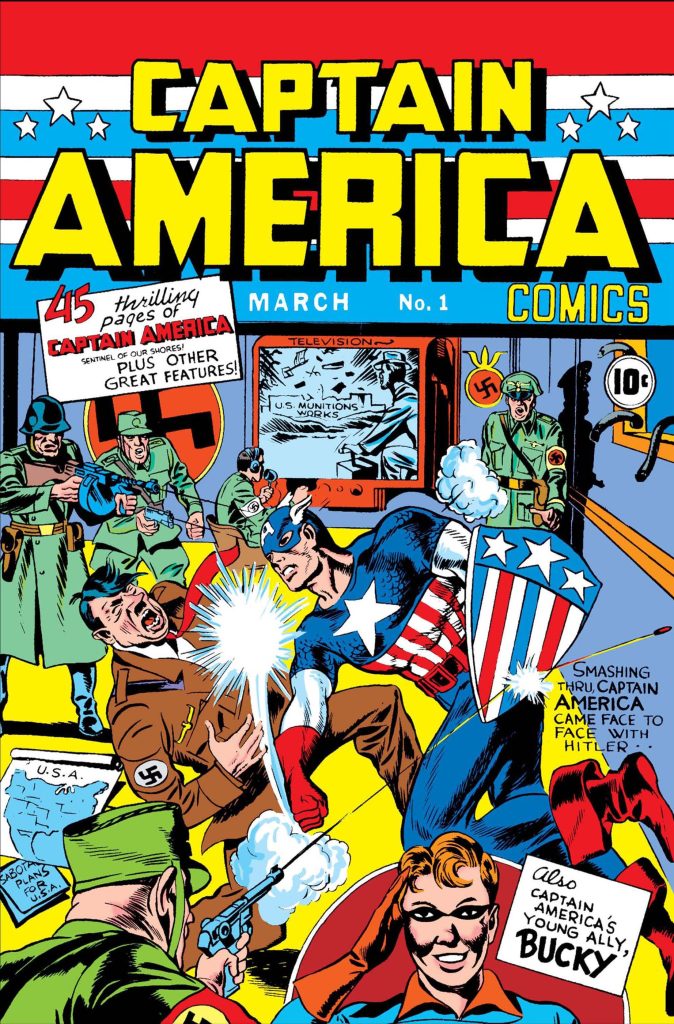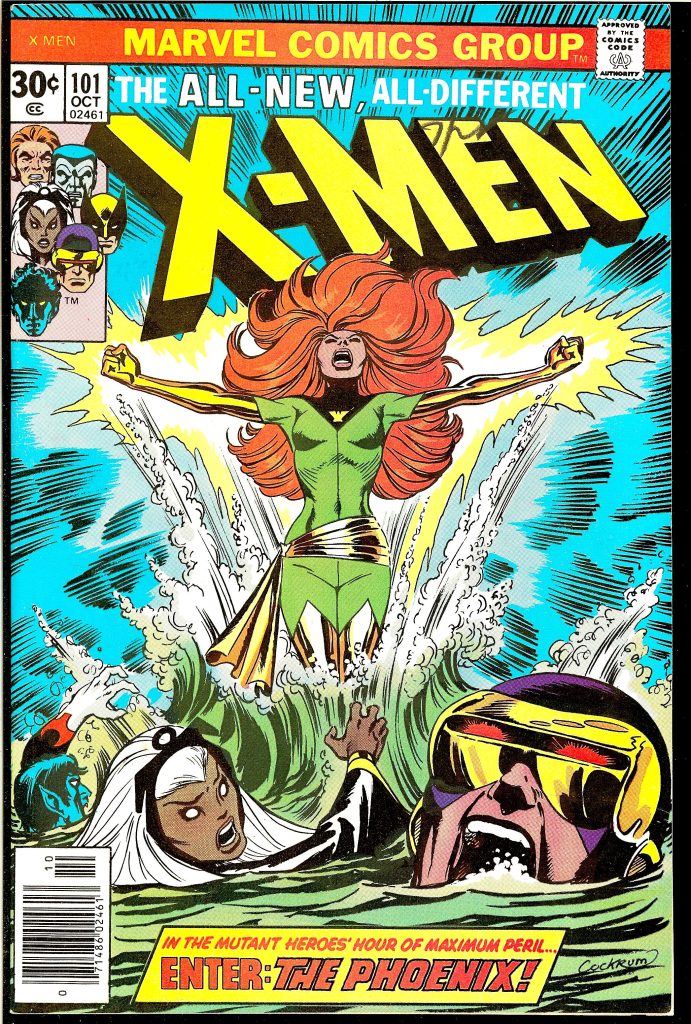When you see the phrase “Bronze Age,” what do you think of? Your thoughts might drift toward history. Or maybe you think about the Civilization video game.
I think of comic books.
Comic books eras are described in terms of “ages” that use metal alloys in naming, undoubtedly because early comic book collectors also played D&D and looted goblin corpses for silver pieces? I don’t know if that’s true.
So, when you hear Silver Age or Bronze Age when it comes to comic books, these terms are shorthand terms used by comic book collectors to ballpark the age of a comic book. What follows is a cheat sheet to help you understand these comic book eras and terms.
GoldenAge
Golden Age refers to comic books from the late 1930s through the 1950s.
This era’s book were a titch taller than modern comics and about an inch wider. They were printed on the comics were printed on wood pulp newsprint because it was inexpensive and easily accessible.
Many of the big-time superheroes we love today – like Superman and Batman – were introduced during this period of comics. In fact, the event that many believe began the Golden Age was the 1938 debut of Superman in Action Comics #1.
It was a combination of post-war anxiety and patriotism that dominated early Golden Age comics. Red, white, and blue superheroes were beloved. In fact, the cover that featured Captain America punching Hitler in the face (1941) may be the most iconic Golden age cover.
Comic books were exploding at this point, evidenced by Captain Marvel (Shazam) issues selling 1,000,000+ copies. Because of this demand, the market then diversified, which led to an expanded variety of genres like non-superhero Walt Disney characters from Dell Comics, licensed movie characters like Roy Rogers and Tarzan, plus Archie, who debuted in Pep Comics #22 (December 1941) and remains in print as a character to this day.
Humor comics were introduced as an effort to take peoples’ minds off the war, so it was during this period that Mad from EC Comics debuted (1952).
A year later the comic book industry faced a reckoning when the United States Senate Subcommittee on Juvenile Delinquency was created. The book Seduction of the Innocent claimed comics sparked illegal behavior among minors, so comic book publishers were subpoenaed to testify in public hearings. As a result, the Comics Code Authority was created by the Association of Comics Magazine Publishers to enact self-censorship by comic book publishers. As a result, EC canceled its crime and horror titles and focused primarily on Mad and the popularity of superhero comics waned.
(There is a term for pre-1930s comics – Platinum Age – but it’s rarely used, as so relatively few comics exist from that time that it’s extraneous and over complicates.)
Silver Age
Silver Age refers to 1960s comics, roughly.
This era was kicked off by Stan Lee and Jack Kirby’s Fantastic Four #1. That comic was followed rapidly by Amazing Spider-Man #1, X-Men #1, and Daredevil #1, a growing universe of heroes that interacted with one another in the same shared world and expressed very human emotions and complications, such as the inability to pay rent or a struggle with prejudice.
Superhero comics and characters such as Flash, Wonder Woman, and the Justice League had already been resuscitated in the mid-50s by DC but no one will deny that is was Stan Lee and artists such as Jack Kirby and Steve Ditko who rose to prominence.
Fantastic Four #1 initiated a “world outside your window” style of superheroes with human failings and fears that squabbled and worried about real-world problems. Stan Lee’s colorful and catchy phrasing stood in contrast to the straitlaced archetypes of DC superheroes at the time. The new style became popular among college students who could identify with the angst and the irreverent nature of the characters during a time period of social upheaval and countercultural activism of the 1960s.
Bronze Age
Bronze Age refers to comics from the early 1970s up through the mid- to late-80s, roughly speaking.
The Silver Age of comic books ended with a “snap.” In June 1973, Gwen Stacy, girlfriend of Peter Parker, was killed in the story arc called “The Night Gwen Stacy Died.” The startling snap of bone was the moment that ended an era of innocence in comic books.
The can-do optimism of the 1960s had been replaced by world-weariness. Jack Kirby had left Marvel Comics, ending the most important creative partnership in the history of comics and ushering in a watershed moment of creative reshuffling. Then, in the 80s, that world-weariness would turn to outright cynicism by writers such as Alan Moore and Frank Miller.
70s genre titles such as Tomb and Dracula and Master of Kung Fu began to wane. And Jim Shooter was elevated to EIC of Marvel, bringing an era of discipline, fiscal responsibility, and cohesion in the continuity. Claremont X-Men began an unparalleled 16 year run, rising to the top of the sales charts.
Copper Age
Copper Age refers to late-80s through the 90s comics, roughly measured.
Some say the Copper Age began in the mid-80s but it was really a gradual shift that didn’t really reach the pinnacle and travel to the other side until Jim Shooter was ousted at Marvel in 1987 which paved the way for new editor, Bob Harris, to disenfranchise Chris Claremont in favor of new whiz-kid artists.
It was this artist-first approach to comics that best signified 90s comics. If a talented artist could draw a cover that sold well, the economic thinking went, then have several artists do a smorgasbord of cover variants that could then be foiled-up, 3Ded, and hologrammed. In fact, these hotshot artists like Todd McFarlane, Rob Lefield, and Jim Lee would form Image Comics in the 90s.
It was an era of commercial excess that scrambled to push the edge an inch further each time. It was an era that eventually led to Marvel’s bankruptcy.
Modern Age
Today’s Modern Era of comics encompass roughly all the 21st century, meaning the era hasn’t had time to really differentiate and be assigned a term using metallic alloys.
The break from the 90s came via Grant Morrison’s New X-Men run that coincided with the premiere of the first X-Men movie. So, perhaps the Modern Age will be known as the era that lives in the wake of the dominance of superhero movies at the box office.
But other features from proviso eras persist. Adult-oriented content has remained constant. The Modern Age also still boasts the darker, more sarcastic and mature approach brought by Moore and Miller.
Commercially, the excesses of the 90s persist in an inexhaustible amount of variant covers. The wood pulp of the Golden Age has long been replaced by a slicker and heavier stock.
Will the Modern Age pivot toward previous era values such as the optimistic can-d0 60s or the heroic storylines of the Golden Age that helped a generation heal from a war? Or will commerce or digital win out?
It’s up in the air. The Modern Age likely won’t get its alloy name until long after the era has past and we’ve had a time to reflect on it. For now, I hope this little cheat sheet is helpful as you maybe watch the movies, yet wonder about the stories from back in the day.



